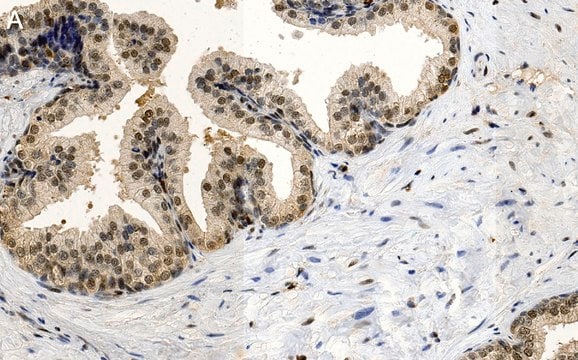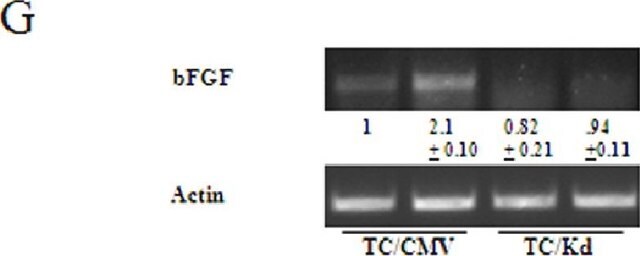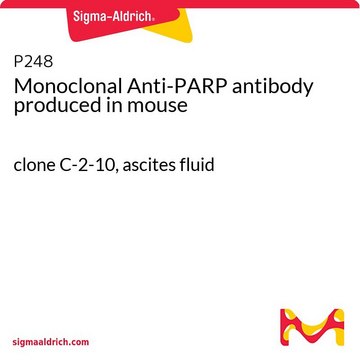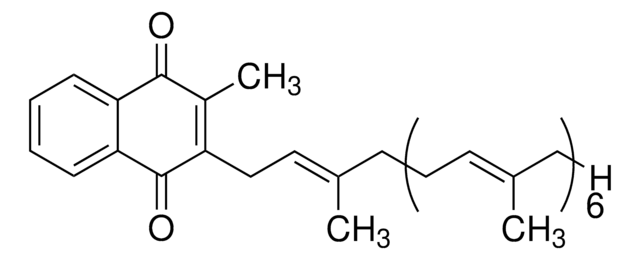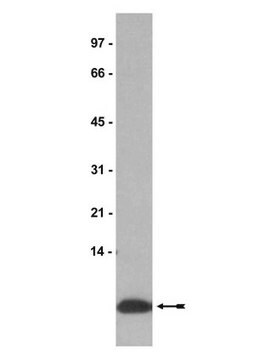05-118
Anti-FGF-2/basic FGF Antibody, clone bFM-2
clone bFM-2, Upstate®, from mouse
Synonyme(s) :
Basic fibroblast growth factor, basic fibroblast growth factor bFGF, fibroblast growth factor 2, fibroblast growth factor 2 (basic), heparin-binding growth factor 2
About This Item
Produits recommandés
Source biologique
mouse
Niveau de qualité
Forme d'anticorps
purified immunoglobulin
Type de produit anticorps
primary antibodies
Clone
bFM-2, monoclonal
Espèces réactives
mouse, bovine, human, rat
Fabricant/nom de marque
Upstate®
Technique(s)
immunohistochemistry: suitable
radioimmunoassay: suitable
western blot: suitable
Isotype
IgG1κ
Numéro d'accès NCBI
Numéro d'accès UniProt
Conditions d'expédition
dry ice
Modification post-traductionnelle de la cible
unmodified
Informations sur le gène
human ... FGF2(2247)
mouse ... Fgf2(281161) , Fgf2(14173)
rat ... Fgf2(54250)
Description générale
Spécificité
Important Note: This antibody can cross-react with native and heat-inactivated basic FGF but will not neutralize biological activity (Uteza, Y., 1999). Upstate recommends anti-FGF-2/basic FGF, clone bFM-1 (neutralizing) (Catalog # 05-117) for neutralizing activity.
Immunogène
Application
Previous lots of this antibody have been shown to immunostain frozen brain sections fixed with ice-cold, ethanol:acetic acid [95:5]. This antibody has also been used at 10 μg/mL to stain paraffin-embedded sections (Matsuzaki, K., 1989).
Signaling
Growth Factors & Receptors
Qualité
Western Blot Analysis:
0.5-2 μg/mL of this antibody detected 100 ng FGF-2/basic FGF, carrier-free (Catalog # 01-114).
Description de la cible
Forme physique
Stockage et stabilité
Remarque sur l'analyse
Fetal liver or kidney tissue.
Autres remarques
Informations légales
Clause de non-responsabilité
Vous ne trouvez pas le bon produit ?
Essayez notre Outil de sélection de produits.
En option
Code de la classe de stockage
10 - Combustible liquids
Classe de danger pour l'eau (WGK)
WGK 2
Point d'éclair (°F)
Not applicable
Point d'éclair (°C)
Not applicable
Certificats d'analyse (COA)
Recherchez un Certificats d'analyse (COA) en saisissant le numéro de lot du produit. Les numéros de lot figurent sur l'étiquette du produit après les mots "Lot" ou "Batch".
Déjà en possession de ce produit ?
Retrouvez la documentation relative aux produits que vous avez récemment achetés dans la Bibliothèque de documents.
Notre équipe de scientifiques dispose d'une expérience dans tous les secteurs de la recherche, notamment en sciences de la vie, science des matériaux, synthèse chimique, chromatographie, analyse et dans de nombreux autres domaines..
Contacter notre Service technique